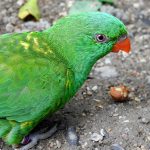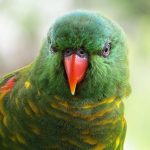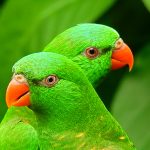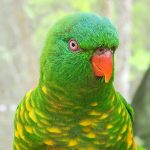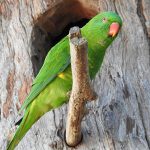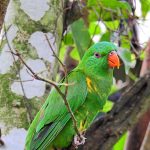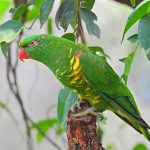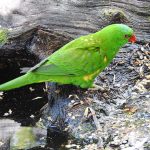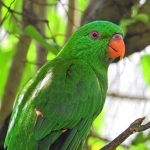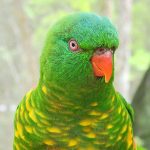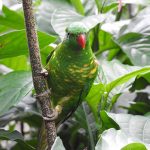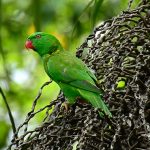SCALY-BREASTED LORIKEET
The Scaly-breasted Lorikeet is a medium-sized lorikeet species with a vibrant and colourful plumage. It has a predominantly green body, with a scalloped pattern of black scales on its breast, giving it its name. The head is blue, and it has a red patch on its forehead. The beak is orange, and the eyes are surrounded by a narrow white eye-ring.
This lorikeet species is native to Australia and is found across various parts of the country. Its range extends from northern Queensland down the eastern coast to Victoria, as well as parts of the Northern Territory and Western Australia. Scaly-breasted Lorikeets inhabit a variety of habitats, including open woodlands, forests, coastal scrubs, and even urban areas. They are adaptable birds and can be seen in both rural and suburban environments.
They have a specialized diet consisting of nectar, pollen, and blossoms from a wide range of flowering plants. They have a brush-like tongue that helps them extract nectar from flowers. Additionally, they also feed on fruits, seeds, and insects.
Scaly-breasted Lorikeets are highly social birds and are usually found in flocks, which can range from a few individuals to larger groups of up to several dozen birds. They are known for their lively and active behaviour, often seen engaging in playful antics and acrobatic flight displays.
Breeding season for Scaly-breasted Lorikeets generally occurs between August and January. They build their nests in tree hollows, using chewed wood to create a cavity. The female lays 2 to 3 eggs, which both parents incubate for around 25 days. After hatching, the chicks are cared for and fed regurgitated food by their parents until they fledge, which typically takes about 6 to 7 weeks.
Local populations may face certain threats, such as habitat loss due to land clearing and urbanization.
These charismatic lorikeets add vibrant colours and lively activity to the Australian landscape, making them a delight to observe in the wild.

